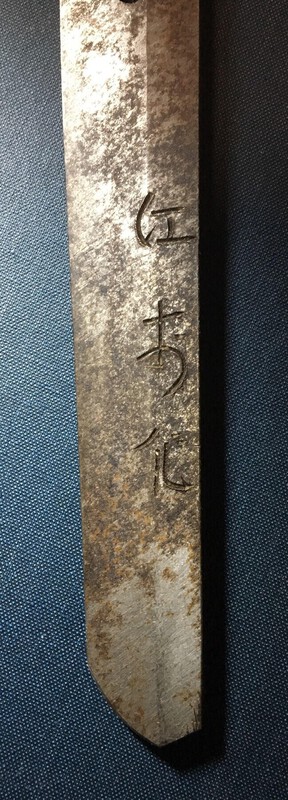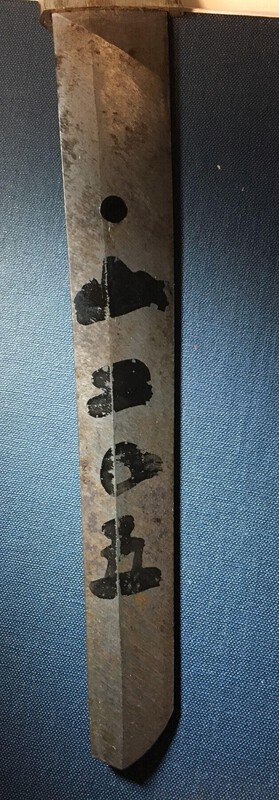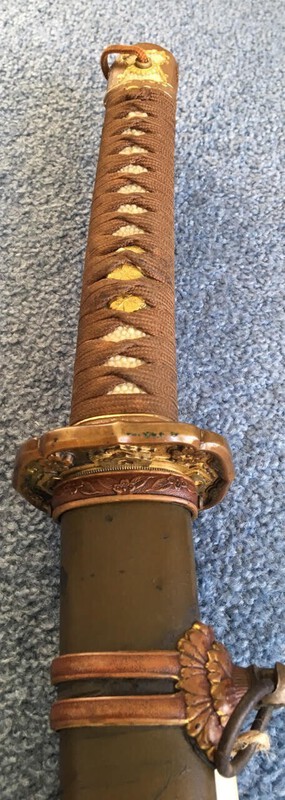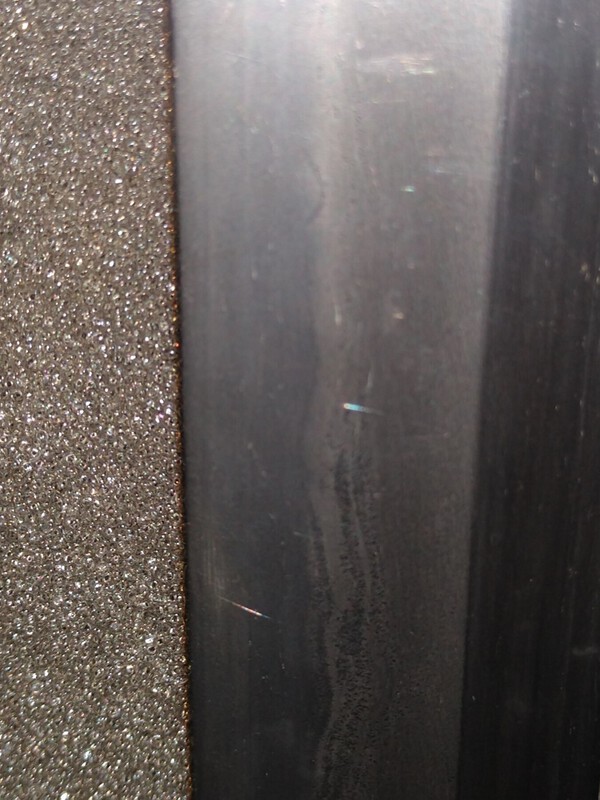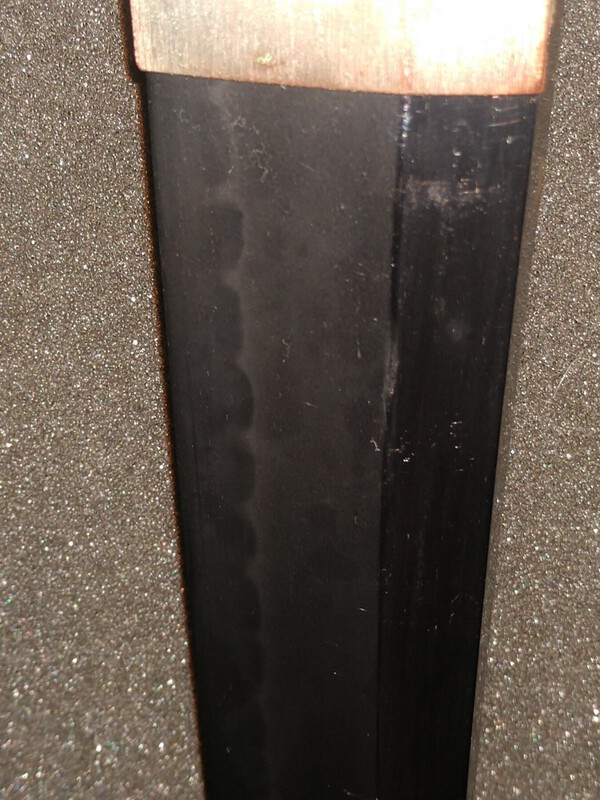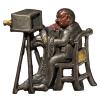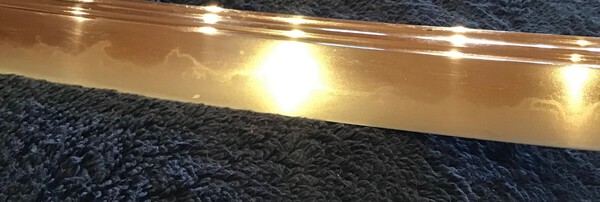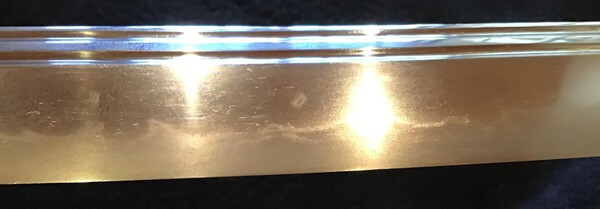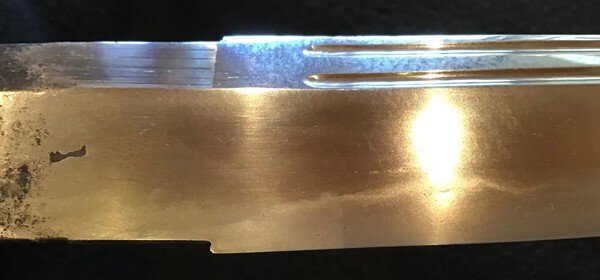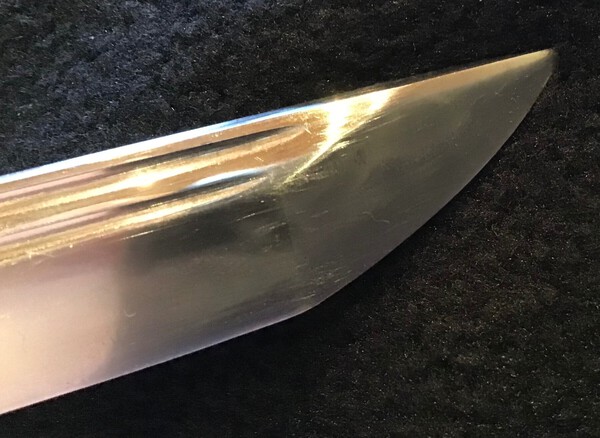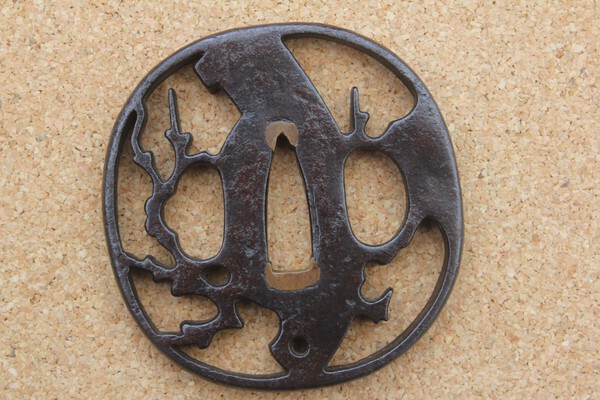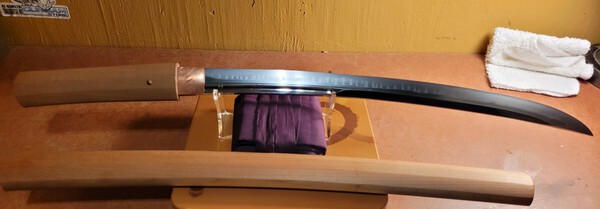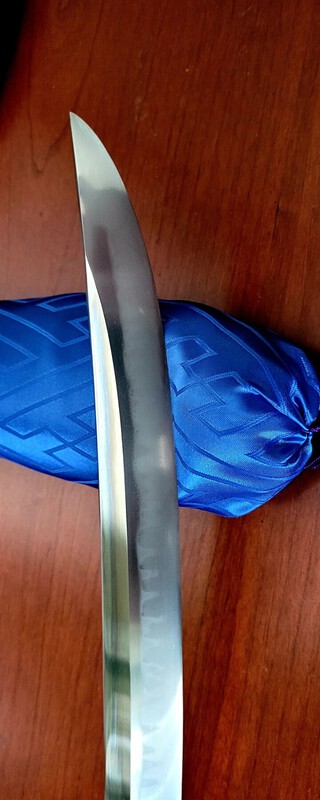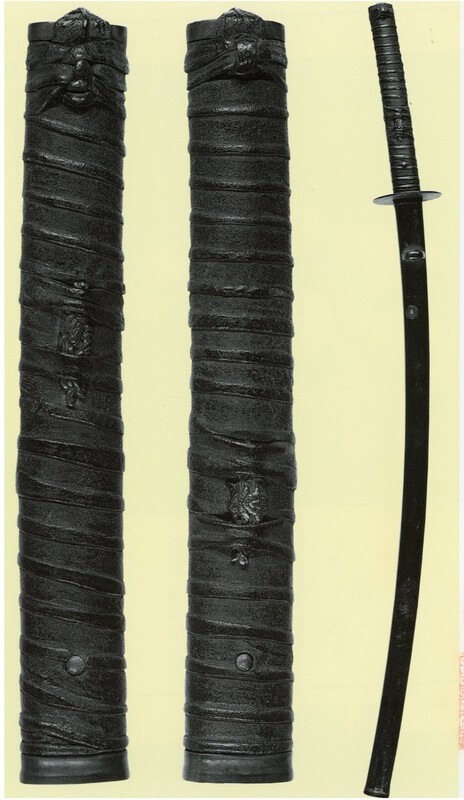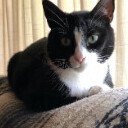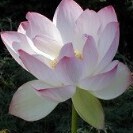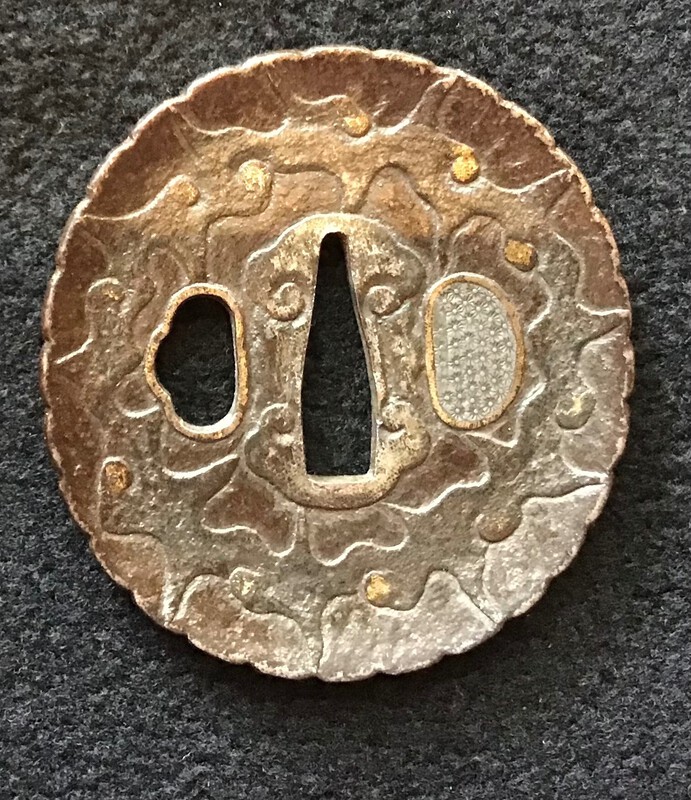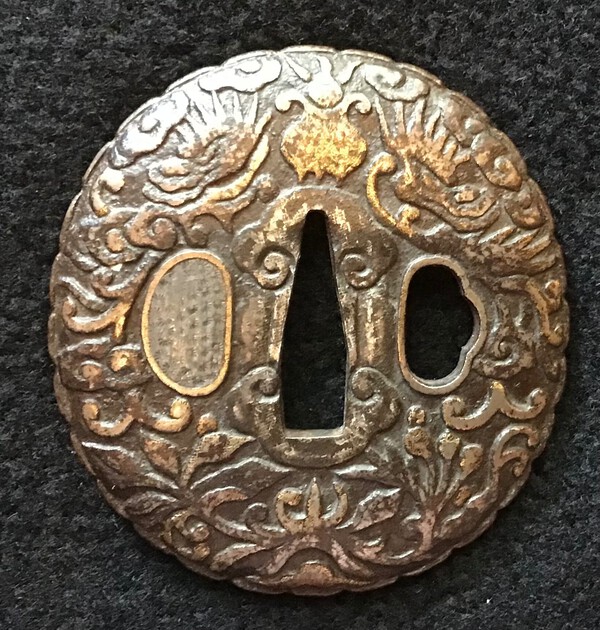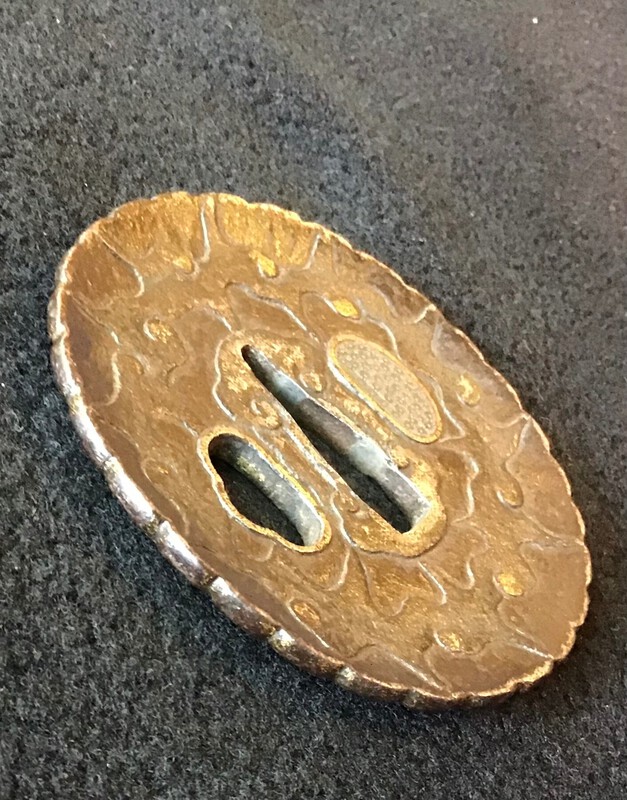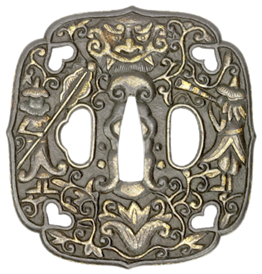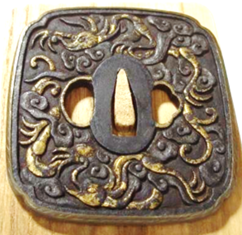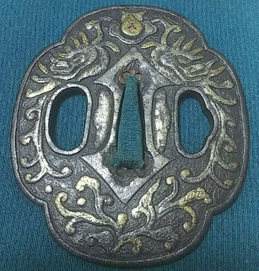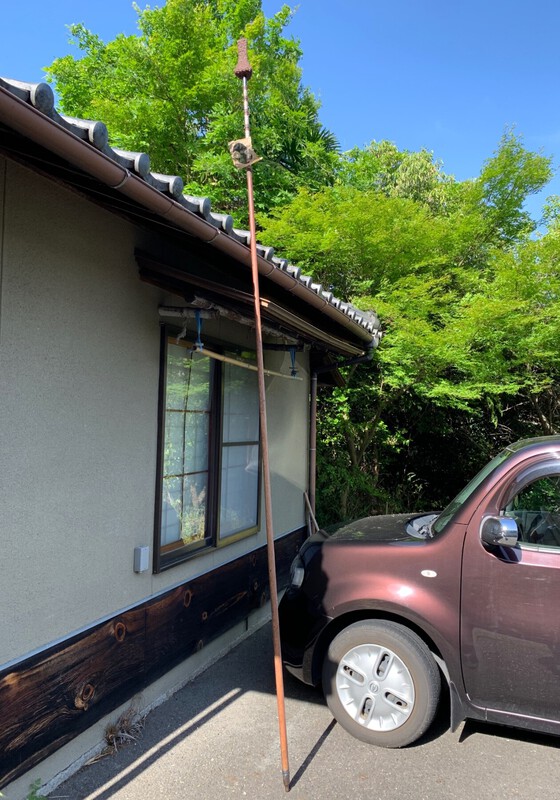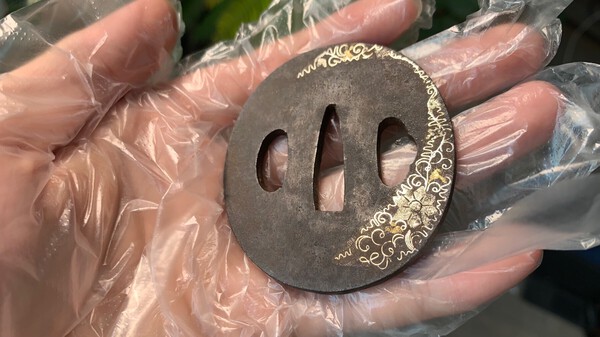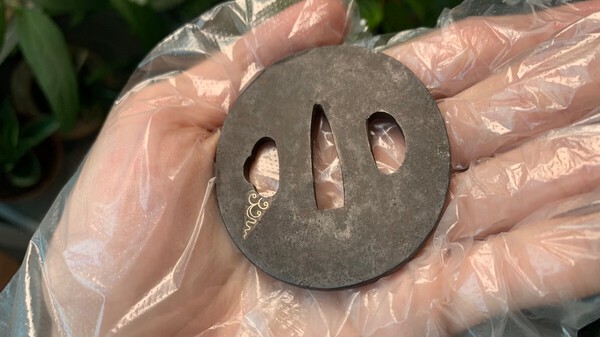Leaderboard
Popular Content
Showing content with the highest reputation on 06/11/2022 in all areas
-
That's the first time I have seen the "overweight" version of the bird tsuba It would be pretty subtle once mounted on a sword and viewed from a "safe" distance by onlookers back in the day. Seems almost like an intentionally "hidden" motif.4 points
-
Colin, As a fellow resident in what you call "the wastelands of the UK" I think you need to try and make contact with more fellow enthusiasts in the UK of which there are a good number, many of whom are active within the Token Society of GB and equally many willing to offer help. It is true there have been and continue to be issues with transport (not just in the UK but everywhere in Europe) at present and there have been some episodes publicised here of problems with customs. However this is not the case generally. Many collectors in the UK import pieces and arranged for item to go to Japan who have not experienced the difficulties that have been discussed here. Can I suggest you consider joining the Token Society of GB if you haven't already and try and attend one of their regional meetings. We are trying to spread them across the country so those living more remotely have the chance of meeting. I think one visit to such a meeting would reassure you that the study of Nihon-To is alive and well in the UK and there are many good swords not being used for hedge cutting.3 points
-
3 points
-
Spartancrest/ Dale said 'good luck in your collecting- no one ever stops at one'. So true. The addiction is a little akin to other readily available drugs like alcohol and nicotine. More fun and pleasurable though. Roger j3 points
-
Dear Michael. There are a huge range of styles and materials used for this, just when you think you have seen them all another pops up. I'm quite partial to this style. From your desvciption it sounds as though what you are seeing is plainer than this, as Mark suggests a scren shot will help. All the best.3 points
-
I agree with all Dale has said. For a first Tsuba it is not the worst you could do. Every guard you buy is another piece of valuable information towards your learning. You may or may not hold on to this guard, but anything you learn from it will transfer to the next piece. Helping you in your decision of the next acquisition and further maintenance. You have a starting point to your collection, keep us updated to where your collection heads.3 points
-
Xander, I think late Edo, two tones of gold nunome-zogan (布目象嵌) for the most part in good condition [nunome is one of the easiest decoration types to damage]- it has a faint seppa shadow so it was likely mounted for some time. The patina looks a bit patchy but that might be the lighting - entry level guard but better than my first and I am sure this is true of a lot of collectors. When you post could you include the size? It looks Wakizashi size (脇差) to me but not sure. [how big are your hands?] You can always ask before the next guard you go for - with the caveat that you may be advertising your find to someone with more money in their pocket, don't include any links to auctions that have not finished, images are safer. [links after the fact are ok.] Good luck in your collecting - no one ever stops at one!3 points
-
Recently a yari was thrust this way and I took the bait. The pole is just under 12 feet long, so to confuse my wife's eyes I have placed it on top of the curtain rail upstairs where it has blended in with the furnishings, like the serpent in the Garden of Eden. The tiny head is conversely 6.5 cm long, (7.0 cm including the Kerakubi), so no registration paperwork needed. Sadly part of the original Nakago has been lost. Yesterday I showed it to a sword polisher who, unusually, particularly likes arrowheads and spear points. He went into ecstasy about the Kerakubi collar, calling it "sekushii". The Nakago is four-sided, the blade is a perfect equilateral triangle, and the ruff/collar is eight-sided. "Look how each facet is differently cut, to make all eight line up with the three blade faces, forming a 'front' and a 'back'!" he enthused. The Mei is 山代守国重 Yamashiro no Kami Kunishige. "This will be Osaka work; no country smiths would bother to do this." "This is a Kago-yari", he said, "and should be on a short pole for self defense when inside a Norimono/Kago, where a sword could not be drawn." When I asked the price for polishing and shaping, I was forced to draw a sharp breath, even before considering the cost of having a shirasaya created for it. (My ship should come home sometime in the near future, I hope. In the meantime, lottery tickets?)2 points
-
2 points
-
2 points
-
As usual I do not have the necessary knowledge to form a convincing opinion on this katana so I come to the amazing expertise on this forum for help. I thank you for looking. All opinions very welcome…good or bad! I should at least “have a go” so with no confidence I would say gimei (I’m always suspicious of 2 kanji signatures) but maybe Mino muromachi with a few added confusions! ln hand it is graceful and light with excellent balance. It has Futasuji hi. One or two “small black spots” but doesn’t seem “tired”. the nakago colour is much blacker than shown in images Dimensions- nagasa 69.3cm (86.5 overall) Ubu motohaba 3.17 cm (noticeable fumbari in area above the habaki) sakihaba 2.00 cm nakago kasane 7.96 mm mune kasane 4.55mm motokasane 7.18 mm (ie high shinogi) sakikasane 4.81mm sori 2.8cm slightly koshisori Hada is indistinct in old polish but masame visible in some areas just above hamon. Maybe a ghost of itame elsewhere. Hamon is wild gunome midare with tobiyaki, a few yo and what I would call “crab claws” with much konie. Boshi is a simpler gunome continuation . The kissaki tip was chipped by the ********** carriers when they unpacked it to have a look and then mishandled it….before taking no care to repack it properly. Bless them. Thank you in anticipation.2 points
-
Hi Geraint, Very nice tsuba. I'm particularly impressed with the boldness of the design in that the artist has only connected the body of the tsuba to the mimi at the three apexes of the triangle. The diamonds and karigane are free floating and look rather fragile and easily broken off, unlike the examples from Dale. But the tsuba is thick, 6 mm, so it does have strength and the free floating parts are OK. The unusual design, roughly (hammer) finished mimi and tekkotsu would lead me to Owari. They did make large tsuba and I believe that Yagyu was an offshoot (it does have Yagyu features) Kanayama (usually smaller, but did make large tsuba) and Shoami (who made just about every genre through their numerous branches) would be secondary guesses. thanks for the post, best regards, John2 points
-
Fair to say that at least 75% of the wan shaped tsuba are going into Higo or Hizen? Maybe 85-90% of wan tsuba are covered if you say tsuba from Kyushu associated schools. Wan shape => think Kyushu. No surprise, given the origins of the idea for wan tsuba. During the 2 years I operated as a small shop dealer helping to clear some estates, a nice Hizen wan tsuba was sold by me. For reasons of objectivity, I wasn't suppose to buy anything directly. When that tsuba came up again, I tried to buy it. Someone else got to it first. Hizen tsuba are generally not highly regarded, but there are some very nice ones now and then.2 points
-
I think the mei looks like the two-character Muneshige mei on the sword on Tokka (see below). There are differences in the execution of the mei, which can't be ignored, but the two-character construction, the size of the characters, the placement, and the identical nakago jiri, make me think its trying to be one of the two Muneshige smiths from Aki Provice (MUN372 and MUN374). Muneshige from Aki Province (two character Muneshige). (Ignore Tokka's typo of "Mumeshige"). https://tokka.biz/sword/muneshige4.html Obviously the hamon and the sori are completely different. If we look at the Muneshige smiths from the Kanbun era, however, the mei is completely different, so I feel the focus can be narrowed to these Muneshige smiths working in Aki. Kanbun Muneshige (Settsu Province, signing as Mutsu-no-Kami) http://sanmei.com/contents/media/H50927_S2097_PUP.html2 points
-
I believe your second book would be 掌中新刀銘盡大全. Unfortunately I am not sure of proper romanization for the title. You can see for reference the book sold in Japan: https://www.jauce.com/auction/e451479965 I think this book is focused on Shintō (新刀) period swords. Based on what Japanese sites write in description I think the book might be from 1867 (慶応三).2 points
-
Congrats on the start of your new addiction The steel should clean up fairly well with some scraping with antler or ivory. It will even out the appearance of the steel surface once you get those tiny rust bubbles off the surface. Don't use any metal wire brushes of any kind or you'll scratch through the patina that that gives it an aged appearance. Also make sure not to scrape the gold overlay with anything or you'll take it right off.2 points
-
I agree with Richard and others. Consigned or Attributed are better word choice than Binned. Wan shape, dragon, namban feel, sort of wood worker type carving, fair bit of nunome work => Hizen work.2 points
-
2 points
-
Interestingly in the gunsmith records there is one gun by Shibatsuji Chōzaemon 長左衛門and another by Shibatsuji Chōuemon 長右衛門, and each is dated 1801.2 points
-
Consigned to the Hizen school - rather than binned? What's not to like? Wangata shape, nunome-zogan, star pattern ategane. It was all the rage at one time in Japan. I am glad you say it is darker in real life - the image is a little overexposed. I think you have two options on the design on the ura - waves or clouds - depends on the dragons. Gold clouds above the dragons heads on the omote.2 points
-
2 points
-
2 points
-
Beautiful work. You will get a lot of opinion but you won’t get a lot of certainty without shinsa. The logical step would be to submit it then decide about polish when you know the results. I would probably send it for polish whether it was economical to do so or not just because I like it.2 points
-
2 points
-
Colin, That piece looks like one that would be binned as Hizen work. The shape is called wan gata, and while I'm not seeing the meaning of the pattern on the back this morning, the shape + design does look to be in the namban style... Best, rkg (Richard George)2 points
-
2 points
-
Item No. 233 Iron Sukashi Tsuba 7.40 cm x 7.20 cm x 0.70 cm Subject of Hatchet and Plum Branch unsigned , Ono school , Momoyama period. All the above information taken from Early Japanese Sword Guards : Sukashi Tsuba - by Sasano , page no. 169 Can somebody please scan a copy of the relevant page and add it into the thread ? I have a copy but it is not a good one , so any help would be appreciated. The piece has a glossy , almost confident air and patina in dark brown. Acquired over 10 years ago from an Auction in New York. Provenance - Ex Clarence McKenzie Lewis Jr collection Published Sasano - Early Japanese Sword Guards2 points
-
1 point
-
Hello everyone posting for sale a beefy wakizashi no papers but a few people have said shinto or shin- shinto echizen school? Not sure but it's a stout heavy blade with very active hada and hamon more pics on request for serious buyers. Priced to sell fast. Dimensions: Nagasa-45cm Motohaba-3.0cm Sakihaba-2.5cm Sori-1.8 Kasane-7mm to 5mm Blade weight only-450grams Nice quality redcopper habaki Purple sword bag Price (1550 usd free shipping within cont.U.S1 point
-
1 point
-
The Kozuka (utility knife) were seldom made by the same sword smith. Nice Edo period wak; not the same smith as Ichihara Nagamitsu (gendai, WW 2). A good first find. Much better than my first sword.1 point
-
What material is that - and how does it adhere to the Tsuka?1 point
-
The last contact number I have for Takeo Seki is (edited by admin....I think it's best to share this via pm) Regards, Franco1 point
-
Please could you help me with this tsuba? I have not encountered it’s like before and my knowledge on iron tsuba is very weak. It is mounted on a katana. The colour is darker than in the images and there is evidence of a fair bit of gold nunome zogan…..all now heavily worn. The design would seem to be stylised dragons on one side but the other side?? However the thing that confuses me the most is that the whole plate is quite heavily dished. What is it? Namban? Thank you for looking. Thank you in advance for all opinions! All the best. Colin1 point
-
Wan-gata forms are rare for this particular style of Nanban tsuba carving and overlay. But I guess you could probably say the same for just about any wan-gata form... so I suppose that isn't saying much lol What is definitely unusual though, is having a distinct, raised seppa-dai on the concave side of the curved dish. Here are some other examples of "this style" of Nanban tsuba, but not in the wan-gata shape. The first one below has more sharply defined carving than the typical, but they all seem to favor more blocky/bubbly, almost "childlike" or "folk-art" types of design (not too sure how else to describe it).1 point
-
Oh dear . Well from my experience. it stops when you have a baby! My swords now live in the loft and the Japanese ones in a locked cuboard.1 point
-
Someone posted about Yamashiro no Kami Kunishige recently. I had sold all my yari except this one. I began to wonder how this was actually signed, so I took it down to check. Then I found this old thread and realized that I had not updated it since before the famous polish!1 point
-
1 point
-
Hi Dan, The sword, which is 100% real, is signed Yamato No Kuni Junin Nagamitsu. The paper (I believe that's what you're referring to as COA) is the license every sword in Japan needs to have. It has nothing to say about authenticity, just that it is a sword and what the signature says. This Nagamitsu is most likely not the Nagamitsu you've been reading about. The wakizashi looks to be early to mid Edo period: 17th or early 18th century. Who ever the smith was, he isn't one of the important ones. Nothing wrong with that, though; looks nice. Grey1 point
-
The 南 did not start making a nakago appearance until the following 32nd フ series. 「W」の刻印. Ignore the の when translating into English. It simply states "engraved W."1 point
-
1 point
-
Yep, a lovely sword. There’s a number of smiths signing Muneshige in the Koto period but not much available on line. https://nihontoclub.com/view/smiths?page=108 Don’t be quick to write it off as gimei. I’d go with Shannon’s suggestion: shinsa then take a view on whether it’s worth a polish.1 point
-
Jeremiah wrote: > I know some folks with 100-300 swords. Never ends for them. I call these folk "Estates-in-Waiting"!! BaZZa.1 point
-
Great question, Peter, I've enjoyed reading everyone's story! Mine was simple as my goal in collecting was specific - I set out to collect a fair representation of the major WWII sword types: Army officer & NCO, Navy, and the pre-war kyugunto and Type 32s. In the process, I got 1 kaigunto with a Koto era blade, and 1 RJT gendaito, so I wound up with a sample of traditionally made blades, too. So, my "hunger" was satiated. I got hooked on collecting data on blade stamps, after that, which has run it's course, mostly. So now, it's mostly the social enjoyment of hanging out with all you guys, occasionally finding something new for the files, or helping a new guy.1 point
-
1 point
-
This smith has come up here perhaps twice before. Difficult to read name which I have to go back and work out again each time!!! 充Mitsu… (can also be read…) 江州国友藤兵衛充俶 Gō-Shū Kunitomo Tōbei Jūshuku (?) He is listed as a child of the famous Kunitomo Ikkansai, which will give you an idea of his working life (around Bunka). The stockmaker’s individual name is erased, but there is a 四居角左衛門 常政 listed as working in the Tempo years.1 point
-
Is this yours Sabastian? Very good quality. Probably early to mid 1800s. 藤兵衛Tōbei is a famous 国友Kunitomo line of smiths. (I am just starting to research in more detail your individual smith, and the stock maker. If anything comes up, watch this space!)1 point
-
Just chiming in to add my support for Moses Becerra here in Florida. (nihontoantiques.com) He has done some polishing work for me with great results. His shirasaya and habaki are also very good. Best, Mark1 point

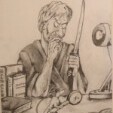



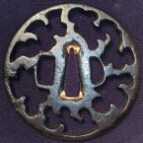

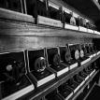
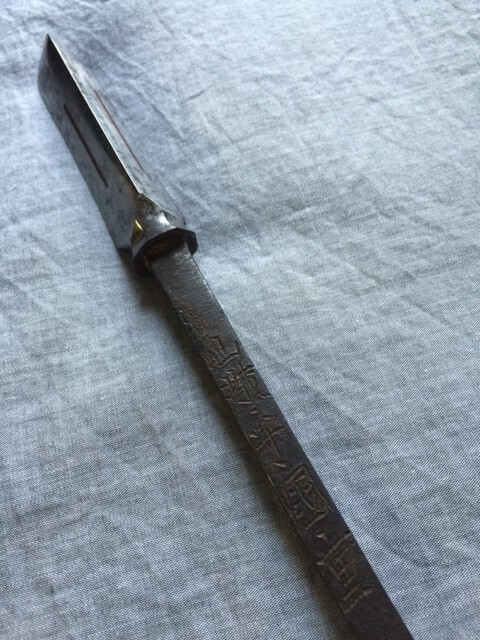

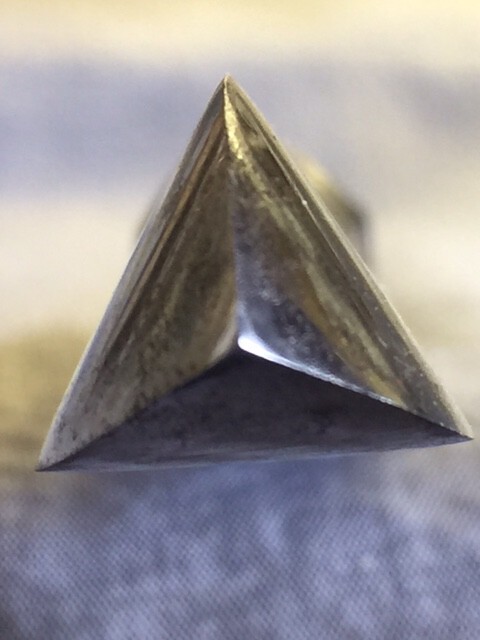
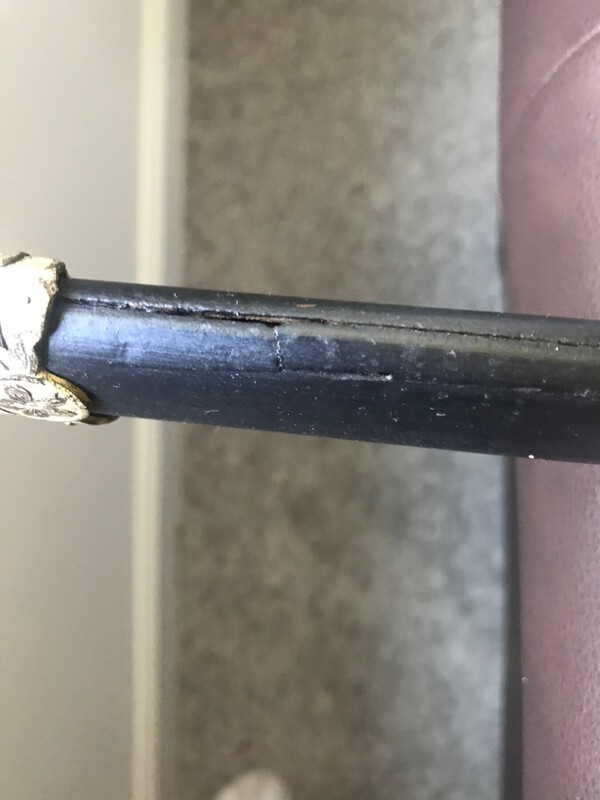
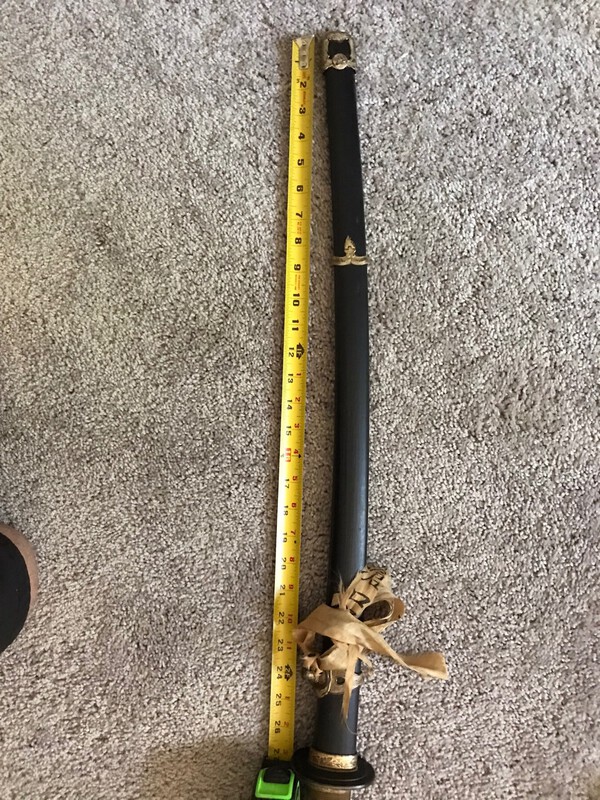
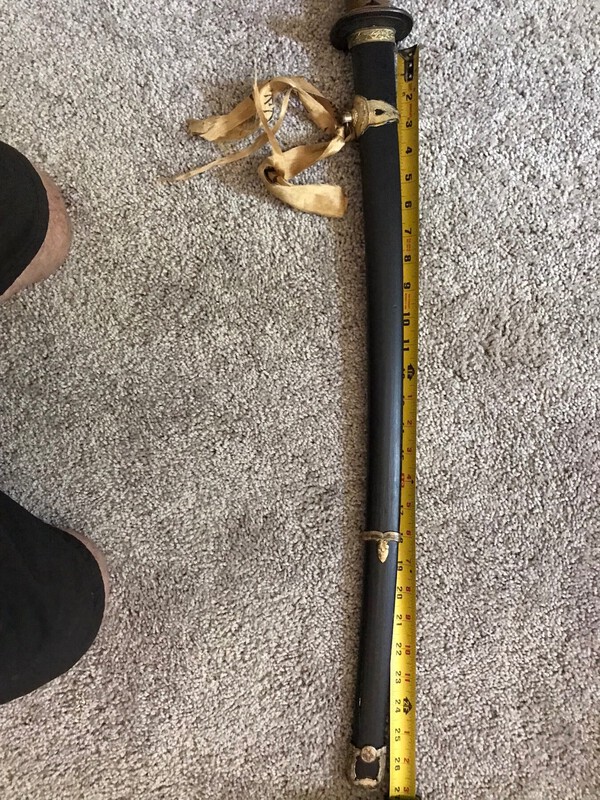
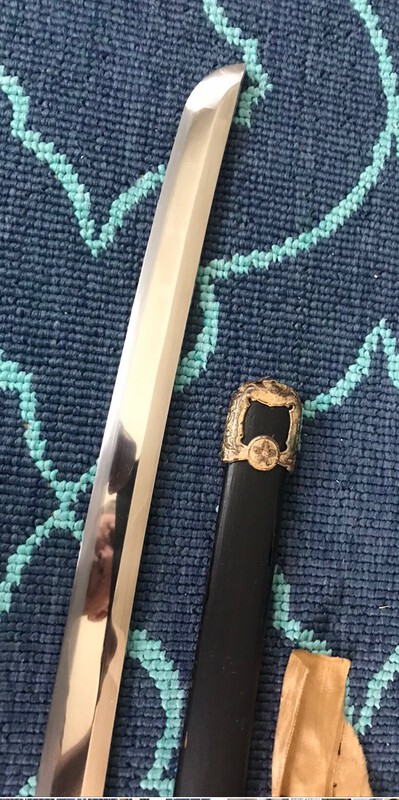
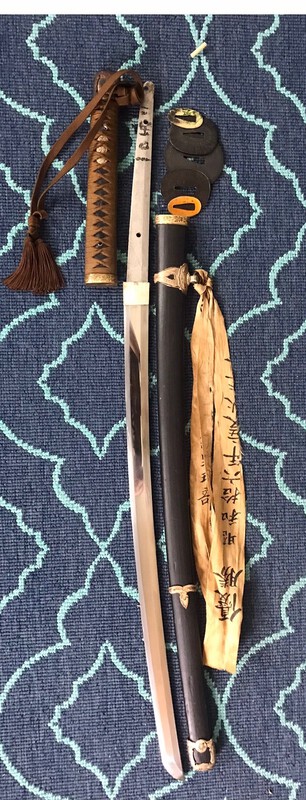
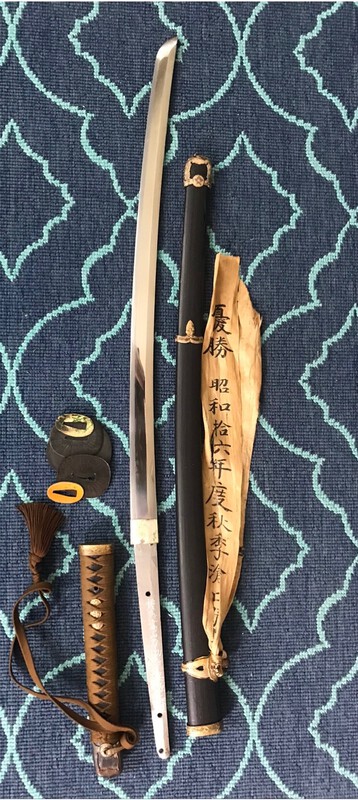
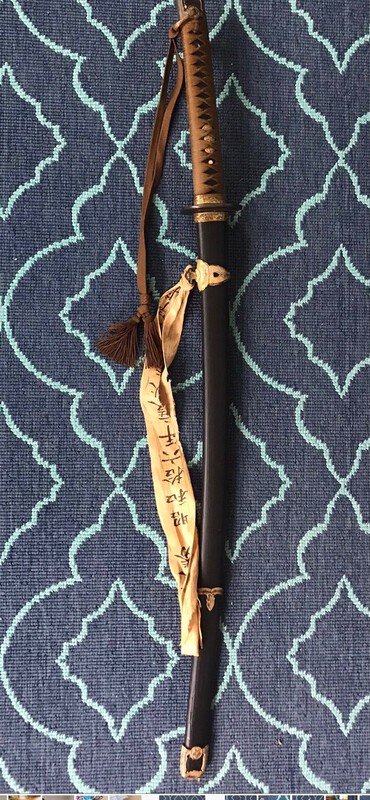
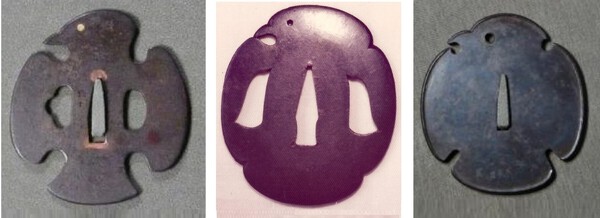








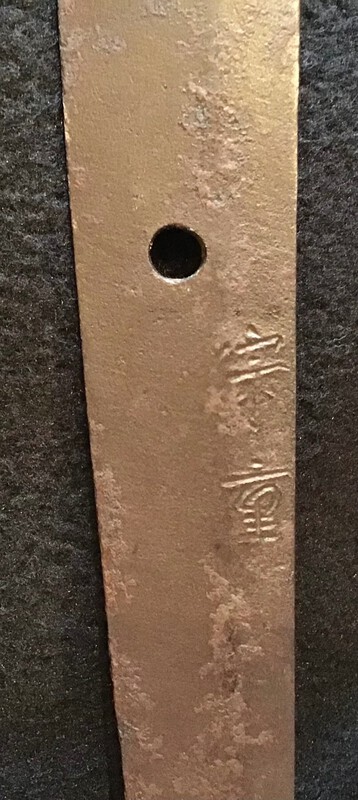

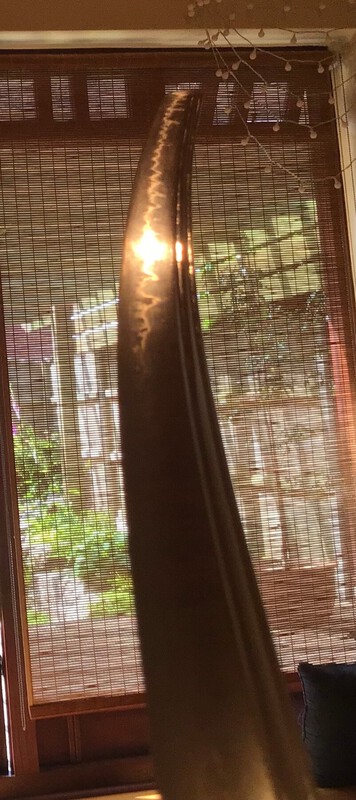

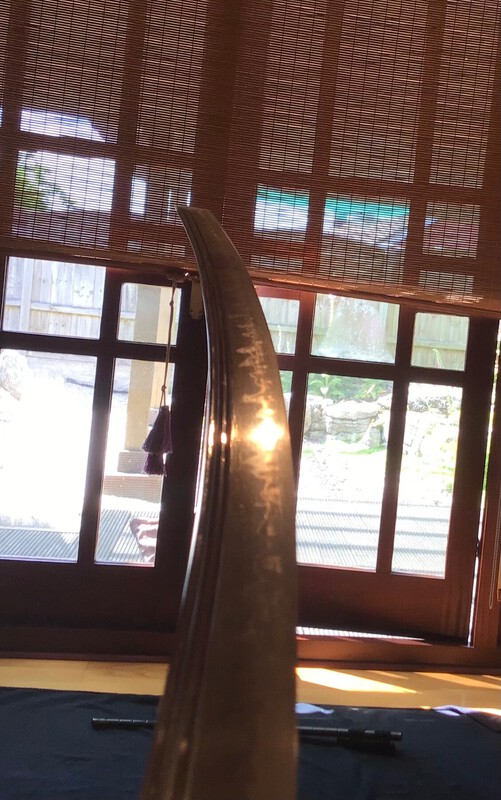
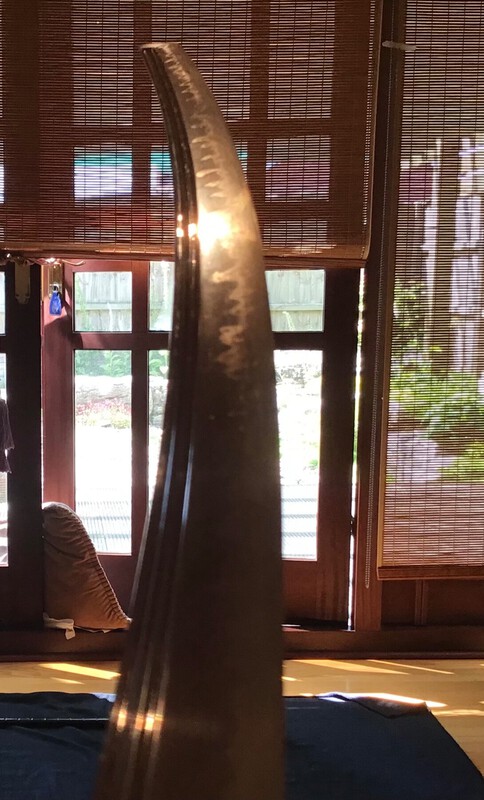
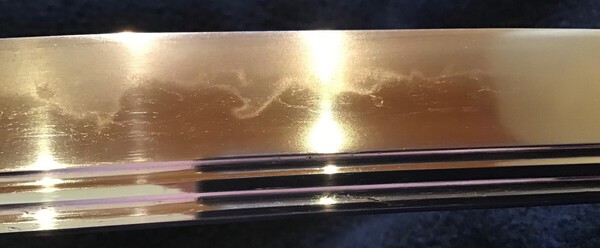





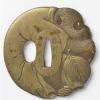


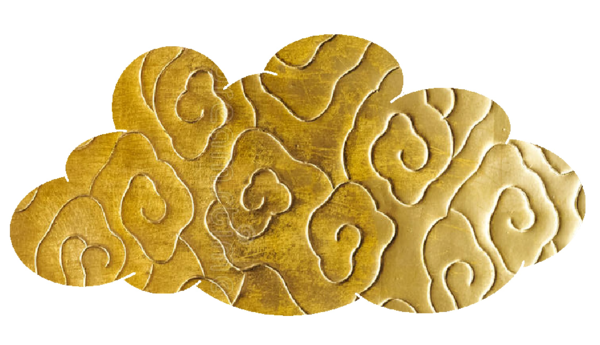

.thumb.jpg.bc10b59027a00aa142dce0349f3ba9e0.jpg)

